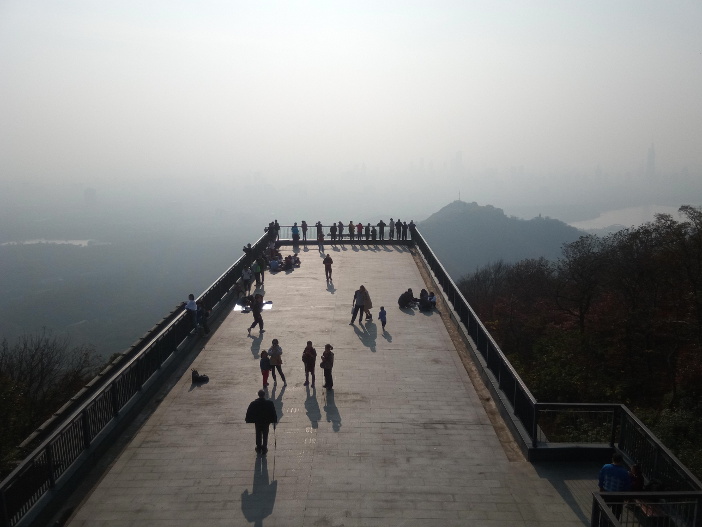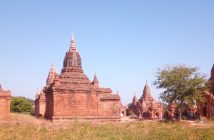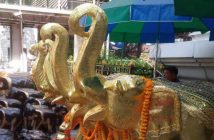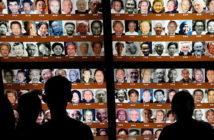“The purple headed mountain,
the river running by…”
As a kid I used to sing these words from the hymn “All Things Bright and Beautiful” with some bafflement. I hadn’t seen many mountains, but I was pretty sure they weren’t usually purple. And I’m not any the wiser as to why Nanjing’s Purple Mountain is so called. Its Chinese name, Zĭjīn Shān, means an even more improbable “Purple Gold Mountain.” Wikipedia has two different explanations in its brief entry, neither of them wholly convincing.
Whatever the reason, it’s a pleasant place to stroll, a forested haven right in the heart of China’s former capital. And after our moving but grueling visit to the Memorial to the Nanjing Massacre, we needed something to soothe our souls. At one point we stumbled on a lake, where a few hardy locals were swimming, in defiance of signs forbidding it and the general Chinese attitude that while safety precautions on construction sites are an optional extra, any water more than ankle deep is a deadly peril from which people must be protected at all costs.
It’s also the site of Ming Tombs: not as extensive as Beijing’s complex, but scattered through the forest so that you come across 14th century carvings wherever you wander.

This dog guards the tomb of a Ming dynasty general, but seemed friendly
Because we were enjoying our ramble, and had badly underestimated the size of the mountain, it was past midday when we arrived at the park’s main attraction: the Sun Yat-Sen Mausoleum. (We ended up taking the bus to cut short a lengthy walk.) Sun Yat-Sen, or Zhongshan as he is usually known in Chinese, is regarded as the father of the modern nation, a figure perhaps uniquely revered both on the mainland and in Taiwan. Every town in China has a road named after him, and after his death in 1925 he was interred in a vast hall at the top of a stairway nearly half a kilometer long.
However disappointment awaited us. Access to the tomb is by appointment only, and the first slot available to us was not until 4pm, by which time we were due to be on the train heading for home. If you’re visiting Nanjing I strongly recommend that you pre-book online, or at the very least arrive early in the morning.
So instead we opted for one of the park’s lesser attractions, the cable car ride to the mountain peak, undeterred by the rather alarming signs:

We were sort of hoping that we could rely on the cable car door, to be honest
Tickets cost RMB 100 for a return trip, or RMB 60 if you fancy walking all the way down again. (Kids between 1.2m and 1.4m pay RMB 50/30, and for those under 1.2m it’s just RMB 10/5.) There’s a stop halfway up, and at the top a couple of viewing platforms, some rock carvings, and, surprisingly, a small KFC. You can also walk along a path to a military fort which appears long abandoned, but is still protected by barbed wire and video cameras. Most importantly though, there are spectacular views of the city.

At the top of Purple Mountain, viewing platforms offer spectacular views of Nanjing
We found Nanjing unexpectedly charming. It’s less grid-like than most Chinese cities, with rambling, tree-lined streets and attractive buildings. The high-speed gaotie railway network can whisk you there from Beijing in under three and a half hours, making it an appealing destination for a weekend getaway.
Photos: Andrew Killeen




